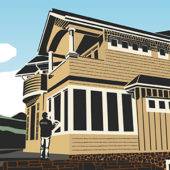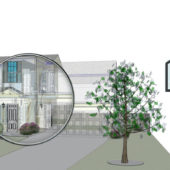The water heater is an important appliance in our homes. We often don’t think about the water heater until it becomes time to replace it. There are some water heater defects that concern home inspectors. There are two types of water heaters: tank and tankless. In addition, some of the common energy sources for water heaters are electric, propane, oil fired and natural gas. In this blog post, we will focus on the natural gas tank type water heater.
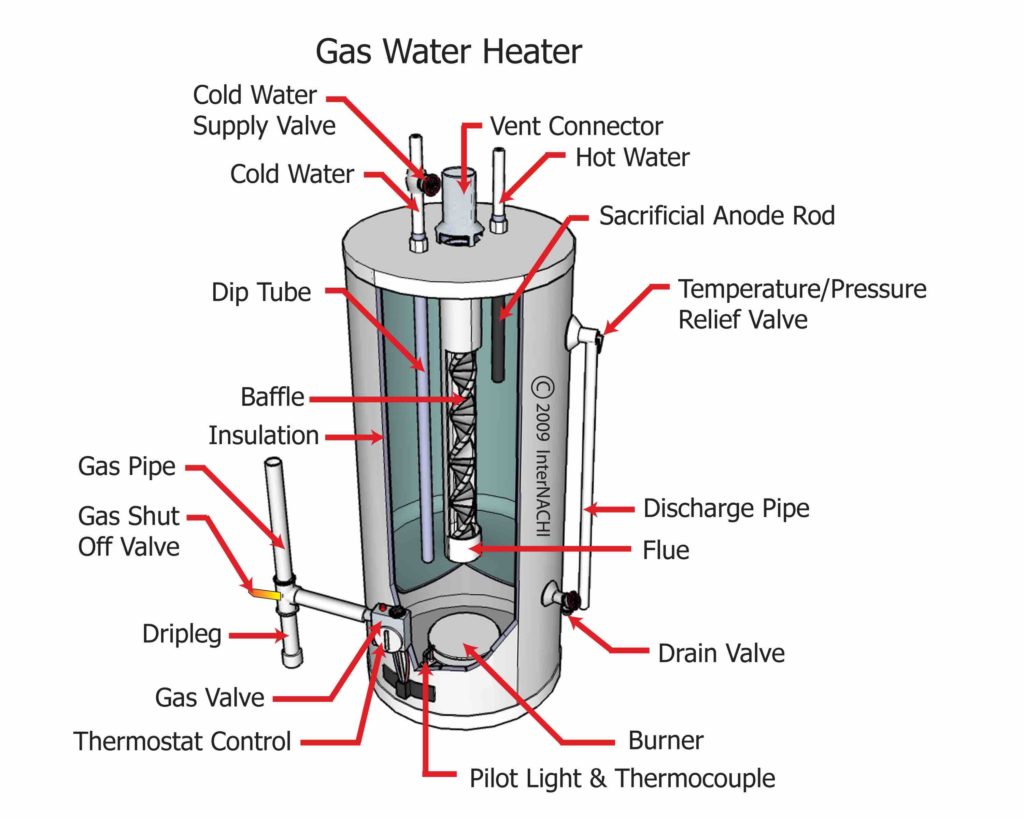
Improper Venting
Some water heaters are higher efficiency, fan assisted draft types consisting of PVC venting similar to high efficiency furnaces. Most water heaters currently are natural draft with single wall and double wall venting. The two major defects are improper slope and clearance from combustibles. Natural draft water heater venting should extend upward at a minimum slope of 1/4″ per foot until it reaches the chimney or flue. Poor slope can lead to backdrafting allowing carbon monoxide into the home. Single wall venting needs to be 6″ minimum from combustible materials such as wood. Double wall venting or “B” vent needs only a 1″ clearance. Most often, a single wall vent connects to the draft hood on the top of the water heater. The single wall vent then terminates in to a B vent that then goes through the house up the roof.
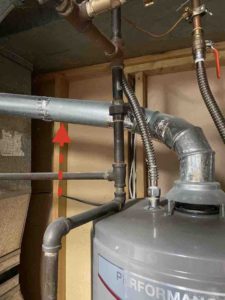
Missing TPR Extension
The TPR valve is an acronym for Temperature and Pressure Relief valve. Water heater temperatures are usually set between 120 degrees F and 140 degrees F. If the temperature and pressure increase in a tank the tank could rupture and/or explode. This creates a very dangerous situation. Manufacturers know this so on every water heater there should be a valve that relieves water and pressure from the water heater. From the valve, an extension pipe is supposed to extend down near the floor. This pipe cannot connect directly to a drain system, it must drain through an air gap in the same room, must be observable, and extend down to within 6″ inches of the floor. Other considerations for the TRP extension exist but the ones listed above are some of the most common.

Missing Sediment Trap
Gas piping may have metal shavings and/or dirt in the pipe when it is installed. This sediment can cause clogs in gas appliances and restrict or prohibit flow. To prevent this from happening, a small piece of pipe extends down from the gas pipe to trap sediment. The gas can follow the flow of the pipe, however the sediment will fall straight down into the trap.
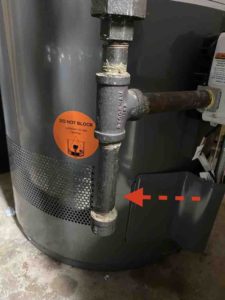
The Lask Inspection Group, LLC is a home inspection company that serves Rockford, IL and surrounding areas such as Loves Park, Machesney Park, Roscoe, Rockton, and Belvidere. If you need a home inspection, call 815-978-7785 for the best home inspector in Rockford, IL. Our primary focus is on safety (like water heater defects) and educating our clients on the systems and components of their home. For additional water heater safety tips, visit Nationwide Insurance water heater safety tips.

